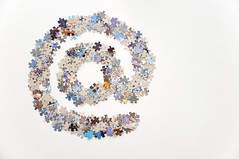We usually think of seeds as something we plant in a garden. There’s another kind of seed you may not know about. And, you can use it to improve your email marketing.
In direct marketing (paper!) seeds are names you add to make sure your mailing gets delivered. If you don’t get your “seed” mailing when you should, it’s time to check on your campaign.
How to use email seeds
The same principle works for email too. Add your own email address to your newsletter sign up list. If you set up an email broadcast and nothing happens, you know something went wrong. Once, I thought I had scheduled something (and didn’t set it up properly). When no email showed up, I went to check and realized what had happened.
Bonus tip: if you’re setting a broadcast up in advance, set an alarm to alert you when it’s supposed to go out.
Place seeds on several email services
Add one or addresses on Yahoo!, Google, and Hotmail. Send a few test messages to yourself at those addresses. This checks several things: one, whether they’re delivered; two, how they look; and three, whether they get sent to the spam folder. Naturally, if your message is stuck in a filter, nobody will see it, or read it, pulling down your opens, clicks, and response rates.
So, go plant some seeds.



